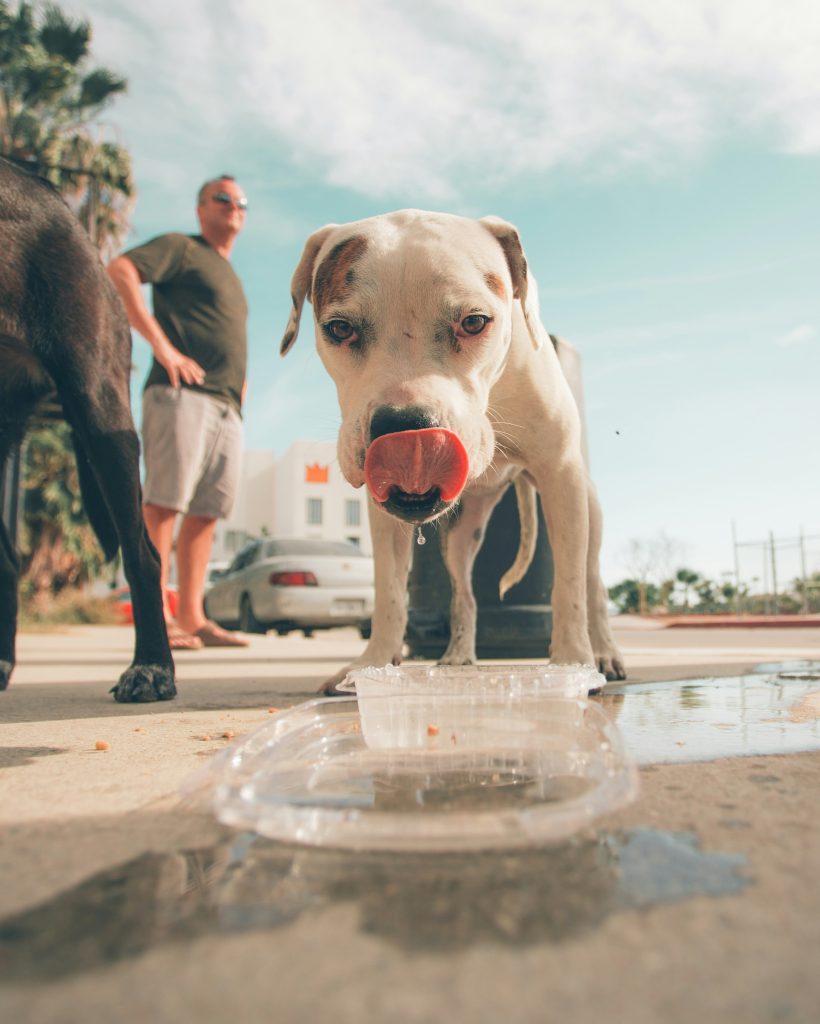Protecting Your Pup: A Guide to Recognizing and Preventing Heat Stroke in Dogs
Recognizing the signs and symptoms of heat stroke in dogs is crucial for prompt intervention and preventing serious complications.
Introduction to Heat Stroke in Dogs
Heat stroke is a severe and potentially fatal condition that can affect dogs when their body temperature reaches dangerous levels, usually above 104°F. Dogs rely on mechanisms like panting and vasodilation to regulate their body temperature, but in high temperatures or humid conditions, these may not effectively cool them down, making them vulnerable to heat stroke. It is essential for dog owners to be able to identify the early signs and symptoms of heat stroke in their pets to prevent the condition from escalating and causing harm.
One common early sign of heat stroke in dogs is heavy panting, which is often accompanied by excessive drooling and bright red gums. Additionally, dogs experiencing heat stroke in dogs may show signs of weakness, confusion, and in severe cases, collapse or seizures. Understanding these initial symptoms is crucial for pet owners to take prompt action and provide the necessary care to their furry companions. For instance, if a dog is exhibiting signs of heat stroke, moving them to a cool, shaded area, offering water to drink, and wetting their paw pads with cool water can help lower their body temperature while waiting for veterinary assistance.
Understanding the Risk Factors of Heat Stroke
When it comes to the risk factors for heat stroke in dogs, breed characteristics can significantly impact an individual dog’s susceptibility. For instance, brachycephalic breeds like Bulldogs and Pugs, with their characteristic flat faces, are at higher risk due to potential breathing obstructions. These breeds have anatomical features that can impede their ability to regulate body temperature efficiently, making them more prone to heat-related issues.
Apart from breed considerations, age is another crucial factor to consider when assessing the risk of heat stroke in dogs. Puppies and senior dogs are particularly vulnerable to heat-related illnesses due to their bodies’ reduced ability to cope with extreme temperatures. Puppies, with their underdeveloped thermoregulatory systems, struggle to dissipate heat effectively, while older dogs may have age-related health conditions that compromise their ability to withstand heat stress.
Moreover, underlying medical conditions can further predispose dogs to heat stroke. Obesity, a common issue in dogs, can exacerbate heat intolerance as excess body fat hinders the dissipation of heat. Respiratory disorders like laryngeal paralysis or brachycephalic airway syndrome can also hinder a dog’s ability to cool down through panting, increasing the risk of heat stroke. Understanding these risk factors is essential for dog owners to take proactive measures in preventing heat-related emergencies and safeguarding their pets’ well-being.
Signs and Symptoms of Heat Stroke in Dogs
Recognizing the signs and symptoms of heat stroke in dogs is essential for early intervention and preventing serious consequences. Apart from heavy panting and weakness, dogs experiencing heat stroke may also exhibit symptoms like excessive drooling, vomiting, and diarrhea. These signs indicate that the dog’s body is struggling to regulate its temperature, leading to potential heat-related complications. For instance, when a dog’s internal temperature rises significantly, it can affect the normal functioning of vital organs, such as the liver, kidneys, and brain, increasing the risk of organ failure.
Moreover, certain breeds are more prone to heat stroke due to their physical characteristics. For example, brachycephalic breeds like Bulldogs and Pugs are at higher risk because their short muzzles can obstruct airflow, making it harder for them to cool down effectively. Additionally, dogs that have been exercising vigorously in hot weather or have been left in a confined space without proper ventilation are more likely to experience heat stroke. It’s crucial for pet owners to be vigilant and observe their dogs for any signs of heat stroke, especially during the summer months or in humid environments where the risk is higher.
Treatment and Management of Heat Stroke
When a dog is suspected of experiencing heat stroke, immediate veterinary attention is crucial to prevent further complications and ensure the best possible outcome for the pet. Upon arrival at the veterinary clinic, the initial steps often involve assessing the dog’s condition and starting the cooling process. One common method is to gradually lower the dog’s body temperature by applying cool water to their body, focusing on areas like the armpits and groin where blood vessels are closer to the surface. This gradual cooling helps avoid shock to the dog’s system and is more effective than using ice packs, which can lead to vasoconstriction and potentially worsen the condition.
In addition to cooling measures, intravenous fluid therapy is frequently administered to dogs suffering from heat stroke. This therapy serves multiple purposes, including rehydration to combat fluid loss from excessive panting and vomiting, as well as supporting organ function during the recovery phase. The fluids help stabilize the dog’s blood pressure and ensure that vital organs receive adequate blood flow, reducing the risk of complications such as kidney damage or cardiovascular issues. Monitoring the dog’s temperature throughout the treatment process is essential to avoid overcooling, which can also be detrimental to the dog’s health. By employing these comprehensive treatment strategies under professional veterinary care, the chances of a successful recovery for a dog with heat stroke are significantly improved.
Preventative Measures for Heat Stroke
Preventing heat stroke in dogs is essential for safeguarding their health and safety. In addition to providing shade, water, and adequate ventilation, it is crucial to be mindful of the unique needs of individual dogs based on their breed, age, and health conditions. For example, brachycephalic breeds like Bulldogs and Pugs are more susceptible to heat stroke due to their compromised breathing ability, necessitating extra precautions in hot weather.
Moreover, understanding the risks associated with leaving dogs in parked cars is paramount in heat stroke prevention efforts. Even on relatively mild days, the temperature inside a car can soar rapidly, creating life-threatening conditions for pets within minutes. For instance, a study conducted by Memphis Veterinary Specialists emphasized the critical importance of never leaving dogs unattended in vehicles to prevent heat stroke emergencies.
By educating dog owners about the early signs and symptoms of heat stroke and the significance of swift intervention, the likelihood of preventing heat-related illnesses in dogs can be significantly increased. This educational approach empowers pet owners to recognize potential risks and take proactive measures to protect their canine companions from the dangers of heat stroke.
Conclusion: Ensuring Canine Safety in Hot Weather
In conclusion, ensuring the safety of our canine companions during hot weather involves a combination of knowledge, vigilance, and proactive measures. Recognizing the signs and symptoms of heat stroke in dogs is the first step in protecting them from this life-threatening condition. For example, heavy panting, excessive drooling, and bright red gums are early indicators that a dog may be suffering from heat stroke. Understanding the risk factors that contribute to heat stroke susceptibility, such as breed, age, and underlying health conditions, is crucial for pet owners to tailor preventive strategies to their dog’s specific needs.
Moreover, taking preventive measures is key to avoiding heat stroke in dogs. Providing access to shade, water, and ventilation is fundamental in helping dogs regulate their body temperature during hot weather. For instance, setting up a kiddie pool filled with cool water can offer a refreshing opportunity for dogs to cool off and prevent overheating. Educating pet owners on the dangers of leaving dogs in parked cars, where temperatures can quickly become fatal, is essential in raising awareness about heat stroke prevention. By implementing these preventive measures and acting promptly if heat stroke is suspected, dog owners can significantly reduce the risk of their pets falling victim to this dangerous condition.




